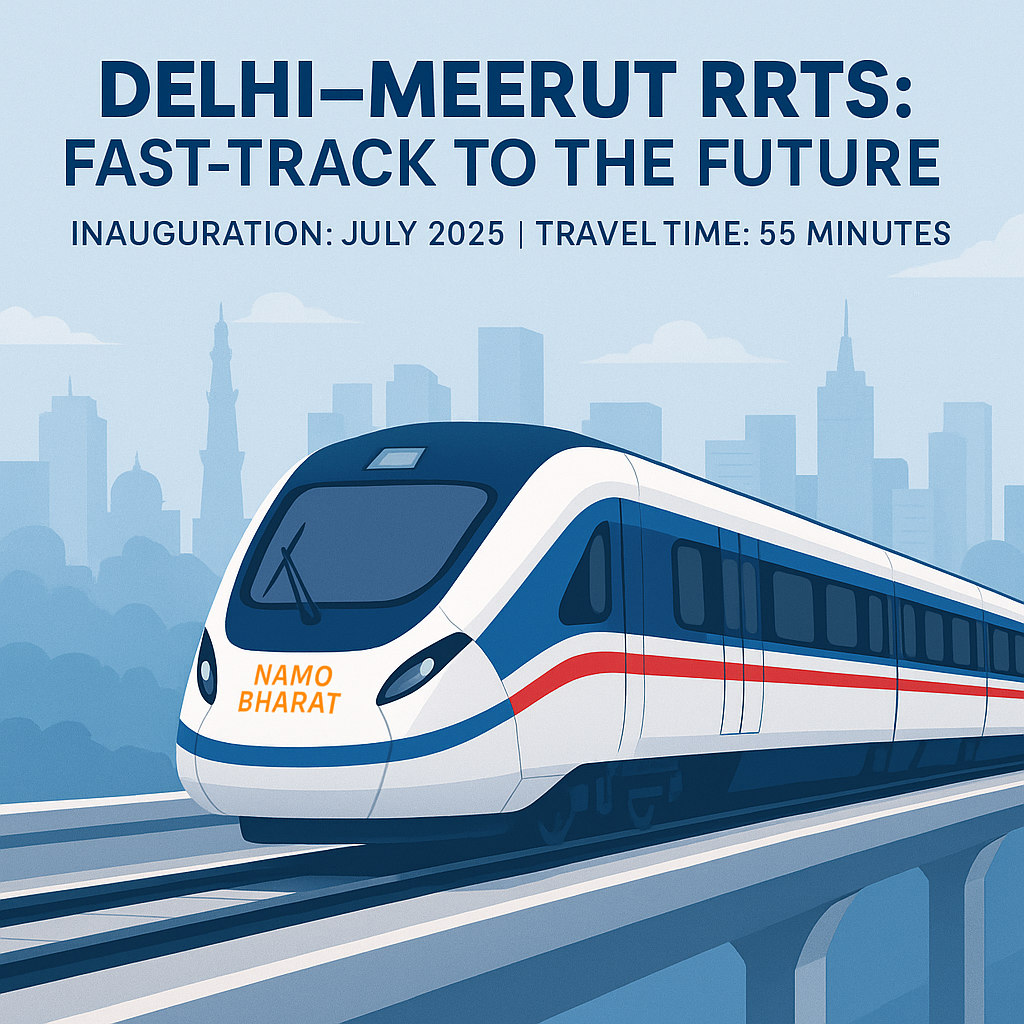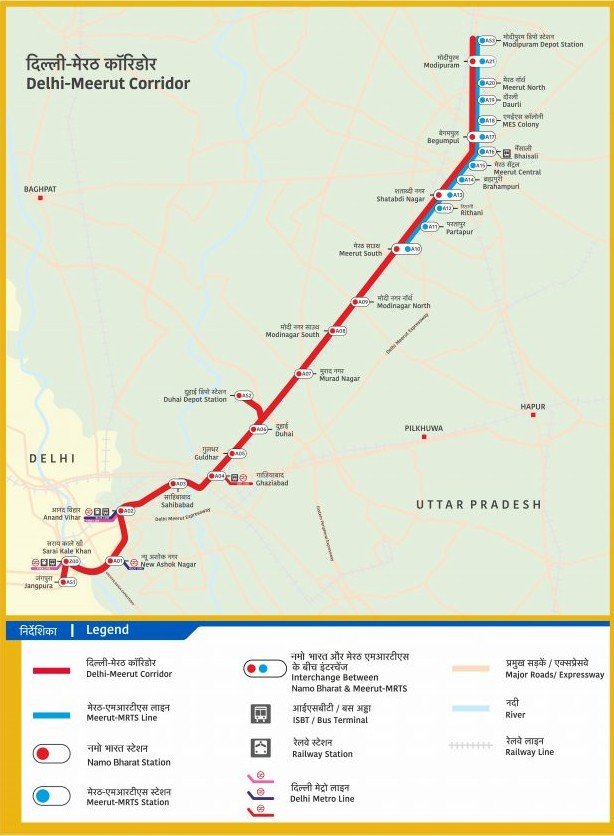
India’s first Regional Rapid Transit System (RRTS) corridor between Delhi–Meerut RRTS is set for a grand launch in early July 2025, marking a historic moment for the country’s high-speed rail infrastructure. The National Capital Region Transport Corporation (NCRTC) has announced the successful completion of final safety and systems trials across the full 82-kilometre corridor. This development confirms that the corridor is technically ready for full-scale operations, after months of rigorous testing, safety audits, and integration checks.
The corridor is designed to reduce travel time between Delhi and Meerut to just around 55 minutes, a significant improvement from the current two-hour journey by road. Built as part of India’s Gati Shakti national master plan for infrastructure development, the RRTS promises to reshape urban mobility across the National Capital Region. It features 22 stations, including key interchanges at Sarai Kale Khan, Anand Vihar, Ghaziabad, Modinagar, and Meerut South, and is designed to operate trains at speeds of up to 160 km/h. The modern ‘Namo Bharat’ trains, manufactured with a focus on speed, passenger comfort, and energy efficiency, are equipped with advanced features such as air-conditioning, regenerative braking systems, and ETCS Level-2 signalling.
While a 17-kilometre priority section between Sahibabad and Duhai Depot has been operational since October 2023, the remaining stretch from Duhai to Meerut has now passed all necessary system and safety trials. The Commissioner of Railway Safety (CRS) has approved the operations after conducting detailed inspections and compliance checks. Officials from NCRTC have indicated that the corridor will likely be inaugurated by Prime Minister Narendra Modi in the first week of July. Once opened, the RRTS will begin services in a phased manner, starting with limited train frequency that will gradually ramp up to full operations.

The RRTS is expected to significantly reduce road congestion and pollution while promoting sustainable urban development along the corridor through a transit-oriented development (TOD) model. It will also spur the creation of residential and commercial zones in Tier-2 cities like Meerut, making daily commuting to Delhi both feasible and comfortable for thousands of residents. The project is expected to generate large-scale employment opportunities, boost local economies, and serve as a blueprint for future corridors under India’s RRTS program.
The Delhi–Meerut corridor is the first of eight planned RRTS routes that aim to connect major urban centres around Delhi. Following this, the Delhi–Panipat, Delhi–Alwar, and Delhi–Sonipat corridors are next in line. The success of the Delhi–Meerut corridor will serve as a litmus test for scaling up India’s vision for fast, reliable, and inclusive urban transport.
Urban mobility experts have hailed the RRTS as a game-changer for intercity commuting. According to planners and city officials, the seamless and rapid connectivity will make satellite towns more attractive for affordable housing and balanced urban growth. As India gears up for the formal launch of its first high-speed regional rail corridor, the RRTS stands as a symbol of the country’s infrastructure aspirations and urban transformation.
Also Read: PM GatiShakti: 95th Network Planning Group Reviews Key Metro, Highway, and Logistics Projects
